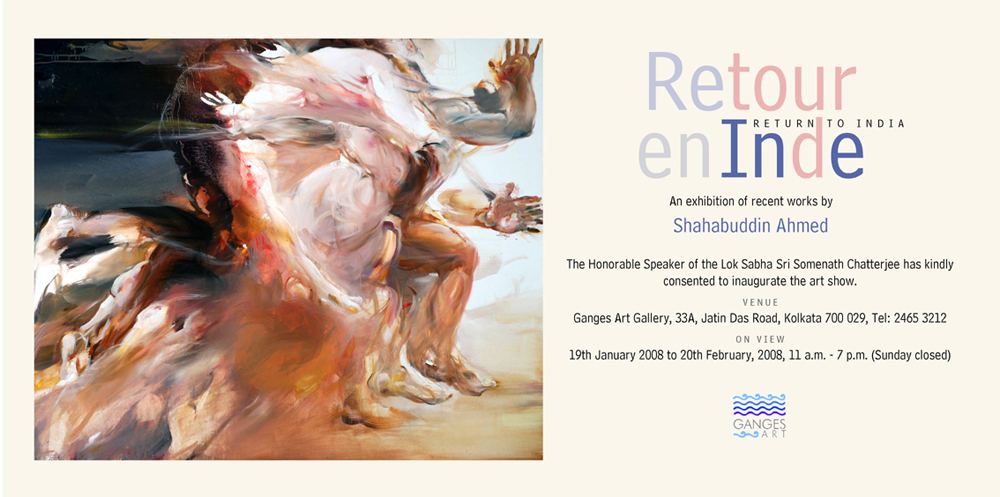Shahabuddin on Unfreedom
Shahabuddin, born in Dhaka in 1951, two years before the Bengali language movement, plunged head-long into the movement for freedom his people waged in 1971, two years before he graduated from Dhaka Art College in 1973. The seminal experience remains fecund in the mature painter par exhibition of movement.
Movement of multitudes of bodies, of single bodies carrying within them multitudes on the move. The bodies move with resoluteness, with all their limbs and features activated. They move, either in pursuit or being pursued, for their life. They move away from terrifying darkness of bondage, and they move towards lightfilled openness of freedom.
In his anxiousness to express the intensity of inspiration to move ahead to freedom, and in his depth of anguish to move out of agonized bondage, Shahabuddin finds his excellent command over the illusionistic representation of human anatomy in movement, even in the right neo-classicist art language, as inadequate. Shahabuddin not-so-much of a visual allegory of human bodies in inspired and / or agonized move to freedom and / or out of bondage, having had its genesis in his in his own formative-year experience, in which he became one with his people, he could fashion a very individual idiom. This idiom in its first place consists delineation of bodies and part-bodies with sweeps of linear-masses of colour. While the gesturally laid masses of colours summarily describe the substantial bodies, the postures, the limb gestures and gesticulating parts of the bodies received special massey-linear treatments from the artist’s hands wielding the brush with passionate intensity. The passionately gestural brush sweeps, in process, metamorphoses the bodies into charged and / or agonized humanity.
The other significant element of Shahabuddin painting is the pictorial space in which he organizes his human imagery and the spatial configurations that he creates with human fingures.
The left-out or the so-called negative space – when volatile with turbulent brushwork and is nocturnly dark it is suggestive of sky over a territory from where tortured humanity seeks to move out. And when the sky is swathed in bright light it is over a free territory to which humanity wants to move for freedom.
The early life experience of his peoples movement towards freedom from bondage has not only been the painter Shahabuddin’s spring-board for life-long emotive cogitation on bonder humanity’s passion for freedom, the experience has also remaind a deep well of specific memories to draw fresh water to irrigate fields on which humanity accross space-time specific still tread. His latest suit of paintings are on the terrorised and tortured, maimed and mutiliated multitudes in agonized movement. The paintings tellingly deal with the ravished and raped women who cannot move out, like their more fortunate fleeing brethren, but can only trust and turn in pain and shame.
The towering apostle of peace, as Shahabuddin envisages in his pictorial tribute,
burdened with the tragic fate of humanity especially of womanhood, would have hung his anguished face, turned away on his toe and moved out with a heavy heart. This painterly reading of Gandhiji has no parallel in contemporary art. And the reading has its source in the history of Bangladesh’s struggle for freedom.
Pranabranjan Ray
